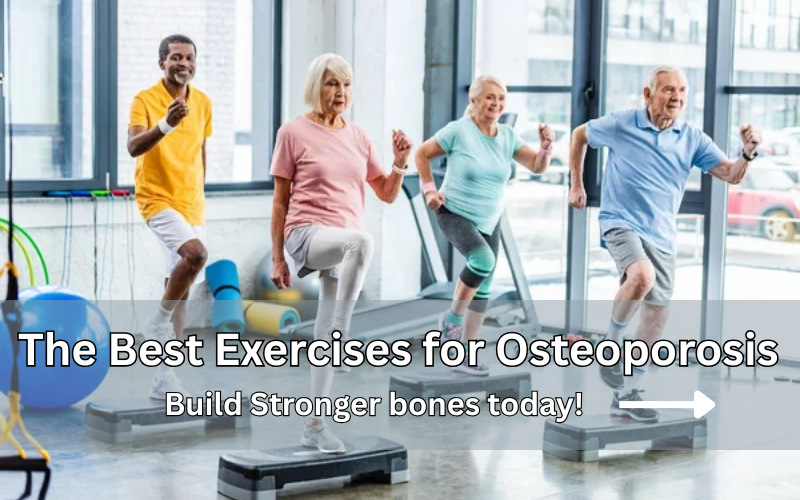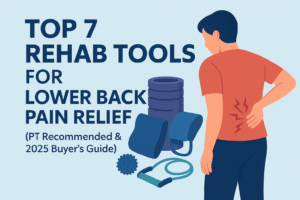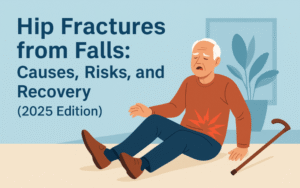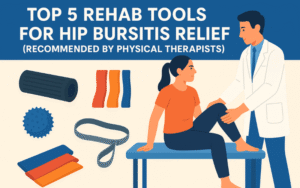Finding the best exercises for osteoporosis can help you stay strong, active, and independent as you age. The right movements can build bone strength, improve balance, and lower your risk of falls. But not all exercises are safe if you have weaker bones. In this guide, you’ll discover simple, physical therapy-recommended workouts that protect your bones and help you feel your best. Ready to learn which exercises can make a real difference? Let’s get started!
Table of Contents
🚨 Don’t have Osteoporosis? Maybe you’ve been having Chronic Lower Back pain? Check out our The Complete Guide to Managing Chronic Lower Back Pain at Home (2025) or other related posts throughout this site.
🏁 Intro: What Is Osteoporosis?

Osteoporosis is a disease that makes your bones thin, weak, and easy to break. It happens when your body loses too much bone or doesn’t make enough. Over 10 million Americans have osteoporosis, and many don’t know it until a bone breaks.
This “silent disease” can make everyday movements risky. That’s why learning about it early is important. Finding the best exercises for osteoporosis can help you build stronger bones, improve balance, and lower your risk of falls.
The good news? With the right moves, you can stay active and protect your bones at any age.
❓ Why Exercise Matters for Osteoporosis
Exercise makes bones stronger and helps prevent falls. Choosing the best exercises for osteoporosis can boost balance, build strength, and protect your health.
🚨Safe movement keeps you active, independent, and feeling your best.
⚖️ Best Types of Exercises for Osteoporosis
Not all exercises are safe for weak bones. The best exercises for osteoporosis focus on strength, balance, and bone-building.
Here are three types that help the most:
- Weight-bearing exercises like walking or dancing.
- Resistance training with bands, light weights, or machines.
- Balance and flexibility exercises like tai chi or simple stretches.
🚨These moves protect your bones and help you stay steady on your feet.
🏋️ 10 Best Exercises for Osteoporosis
(Jump to any exercise below!)
- 1. Pelvic Tilts
- 2. Seated Leg Extensions
- 3. Standing Hip Abduction
- 4. Chair Squats
- 5. Step-Ups
- 6. Heel Raises
- 7. Standing Leg Curl
- 8. Bicep Curls with Resistance Bands
- 9. Wall Angels
- 10. Back Extensions
1. Pelvic Tilts
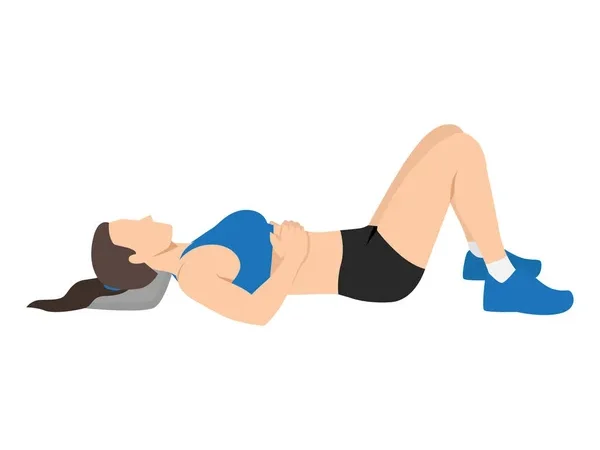
Why It Helps:
Strengthens your core muscles and supports lower back health.
How to Do It:
- Lie on your back with knees bent, feet flat.
- Tighten your stomach and press your back into the floor.
- Hold for 5 seconds, then relax. Repeat 10–15 times.
Modified Option:
- Place a small pillow under your head for extra comfort.
💡Pro Tip:
- Exhale as you press your back down for better control.
2. Seated Leg Extensions
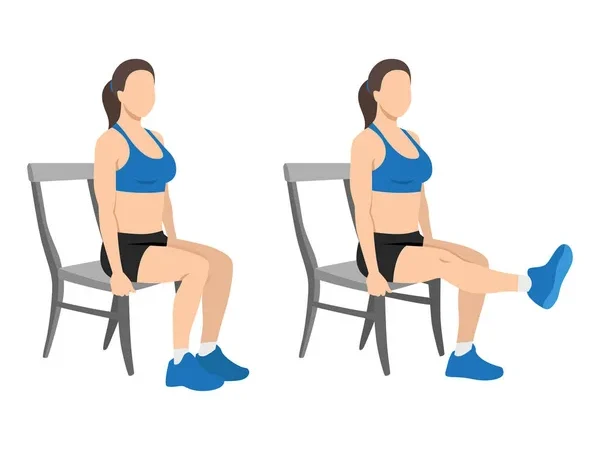
Why It Helps:
Builds strength in your thighs, helping balance and walking.
How to Do It:
- Sit tall in a chair.
- Straighten one leg out in front, hold for 3–5 seconds, and lower.
- Repeat 10–15 times per leg.
Modified Option:
- Lift halfway if a full extension feels hard.
💡Pro Tip:
- Flex your foot (toes up) to engage more muscles.
3. Standing Hip Abduction
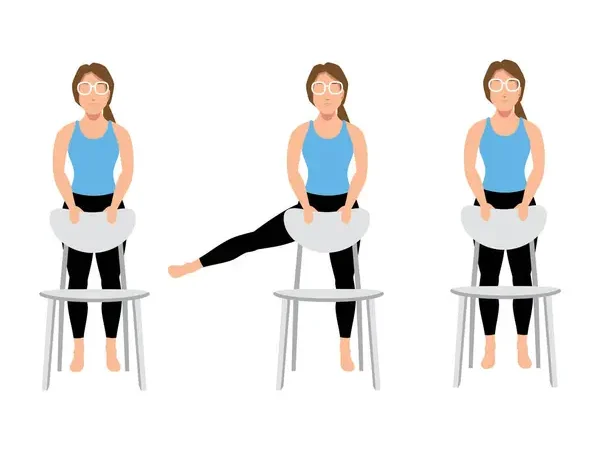
Why It Helps:
Strengthens hips and improves side-to-side balance.
How to Do It:
- Stand behind a chair.
- Lift one leg to the side without leaning.
- Lower slowly. Repeat 10–15 times each side.
Modified Option:
- Lift the leg only slightly if needed.
💡Pro Tip:
- Tighten your core to stay steady.
4. Chair Squats
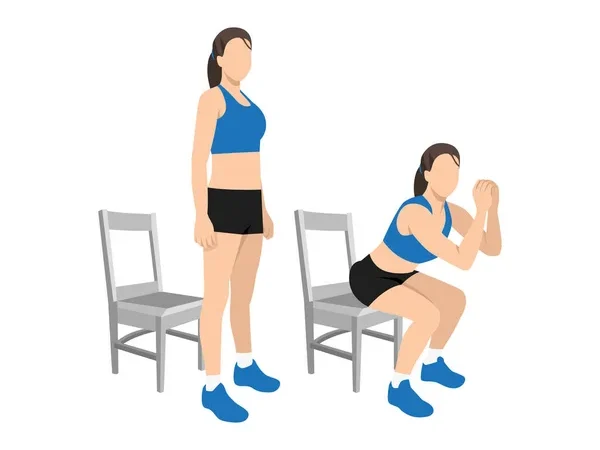
Why It Helps:
Strengthens legs, hips, and improves standing balance.
How to Do It:
- Stand in front of a sturdy chair.
- Lower down like you’re sitting, then rise without using your hands.
Modified Option:
- Use a counter or walker for extra support.
💡Pro Tip:
- Keep your knees over your ankles, not pushed forward.
5. Step-Ups
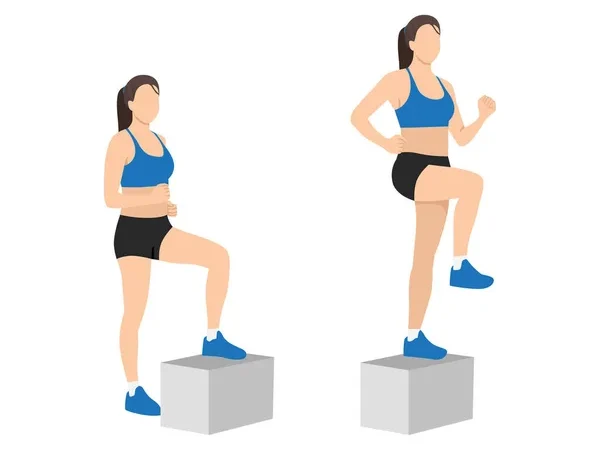
Why It Helps:
Strengthens legs and improves coordination.
How to Do It:
- Step up onto a low step with one foot.
- Bring the other foot up, then step back down.
- Repeat 10–15 times per side.
Modified Option:
- Use a lower step height if needed.
💡Pro Tip:
- Step with control, and hold a rail if balance is an issue.
6. Heel Raises
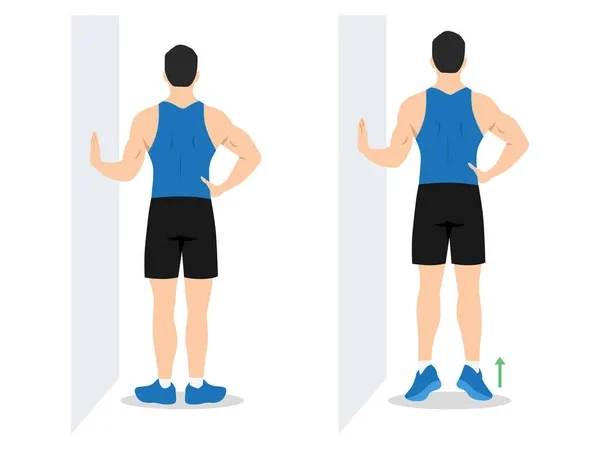
Why It Helps:
Strengthens calves and improves ankle stability.
How to Do It:
- Stand tall behind a chair.
- Rise onto your toes, hold for a second, then lower slowly.
Modified Option:
- Lightly hold the chair for balance.
💡Pro Tip:
- Don’t rush—lift and lower in a slow, controlled motion.
7. Standing Leg Curl
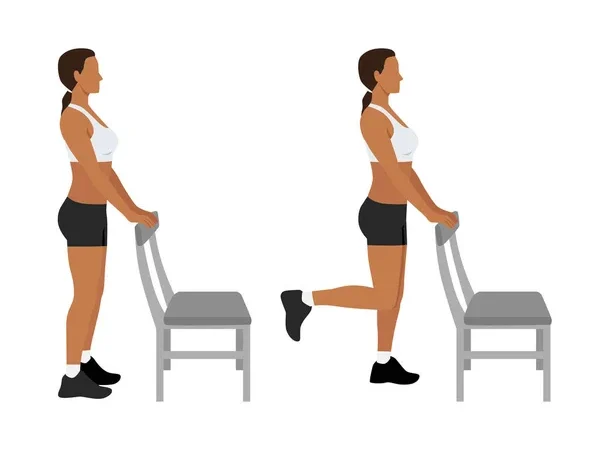
Why It Helps:
Strengthens hamstrings, important for walking and climbing stairs.
How to Do It:
- Stand behind a chair.
- Bend one knee to lift your heel toward your buttocks.
- Lower. Repeat 10–15 times per side.
Modified Option:
- Lift your foot only partway if needed.
💡Pro Tip:
- Keep thighs parallel, avoid swinging your leg.
8. Bicep Curls with Resistance Bands
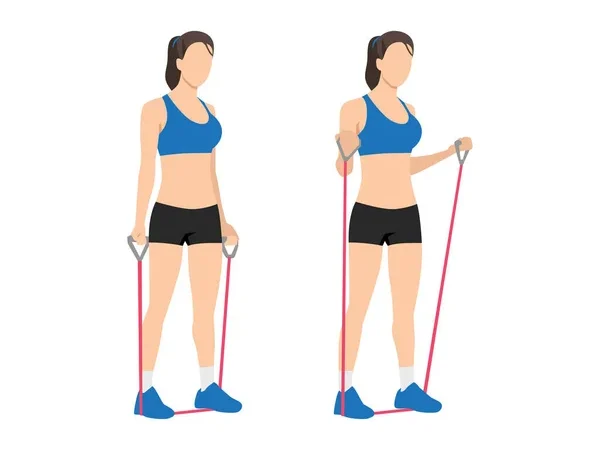
Why It Helps:
Strengthens your arms for better lifting and carrying.
How to Do It:
- Step on a resistance band.
- Hold the ends and curl your hands toward your shoulders.
Modified Option:
- Use a lighter band for easier resistance.
💡Pro Tip:
- Keep elbows tucked close to your body.
9. Wall Angels

Why It Helps:
Improves posture and strengthens upper back muscles.
How to Do It:
- Stand against a wall, arms in goalpost position.
- Slowly raise and lower your arms, keeping them close to the wall.
Modified Option:
- Step a little away from the wall if needed.
💡Pro Tip:
- Keep your core tight and avoid arching your lower back.
10. Back Extensions
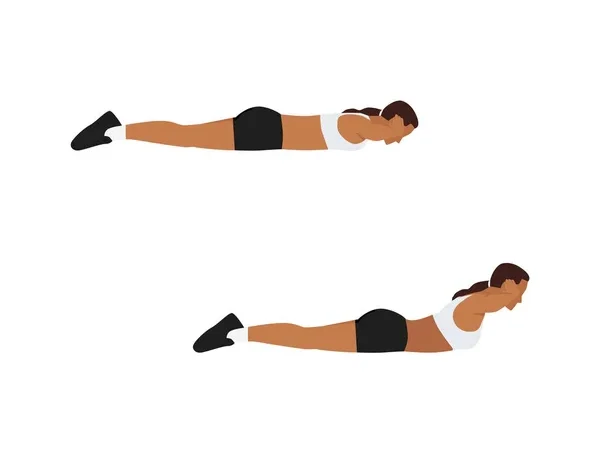
Why It Helps:
Strengthens spine-supporting muscles and improves posture.
How to Do It:
- Lie face down on the floor.
- Gently lift your head, shoulders, and chest a few inches off the ground.
- Hold briefly, then lower.
Modified Option:
- Lift only your head and shoulders at first.
💡Pro Tip:
Move slowly—no fast jerking movements.
📊 Benefits at a Glance
| Exercise | Main Benefit | Bonus Benefit |
|---|---|---|
| Pelvic Tilts | Strengthens core muscles | Supports lower back health |
| Seated Leg Extensions | Builds thigh strength | Improves walking and balance |
| Standing Hip Abduction | Strengthens hip muscles | Boosts side-to-side stability |
| Chair Squats | Builds leg and hip strength | Improves standing and sitting safely |
| Step-Ups | Strengthens legs | Enhances coordination |
| Heel Raises | Strengthens calves | Improves ankle stability and balance |
| Standing Leg Curl | Strengthens hamstrings | Helps with walking and stair climbing |
| Bicep Curls with Resistance Bands | Strengthens arms | Improves lifting and carrying ability |
| Wall Angels | Strengthens upper back | Improves posture |
| Back Extensions | Strengthens spine-supporting muscles | Reduces risk of slouching and back pain |
🛑 Exercises to Avoid with Osteoporosis
While staying active is important, some exercises can increase your risk of fractures if you have osteoporosis. It’s best to avoid moves that put too much pressure on your bones.
🚫Exercises to Avoid:
- High-impact activities like running, jumping, or skipping.
- Deep forward bends (especially in yoga or stretching).
- Twisting movements (like golf swings or some dance moves).
- Heavy lifting that strains the spine or hips.
💡Tips for Staying Safe:
- Always choose low-impact, bone-friendly exercises.
- Focus on slow, controlled movements.
- Talk with your doctor or physical therapist before starting a new workout.
🚨Protecting your bones is just as important as building strength!
🧠 Final Thoughts
Taking care of your bones is essential for staying strong, active, and independent. By incorporating the best exercises for osteoporosis into your routine, you can build strength, improve balance, and reduce the risk of fractures. Remember to start slowly, stay consistent, and always listen to your body.
Your bones deserve the best care, and with the right exercises, you can help them stay strong for years to come. So, take the first step today, and get moving toward healthier, stronger bones!
Ready to take control of your back health?
Subscribe to our newsletter for more expert tips, rehab exercises, and stretch guides delivered straight to your inbox!


